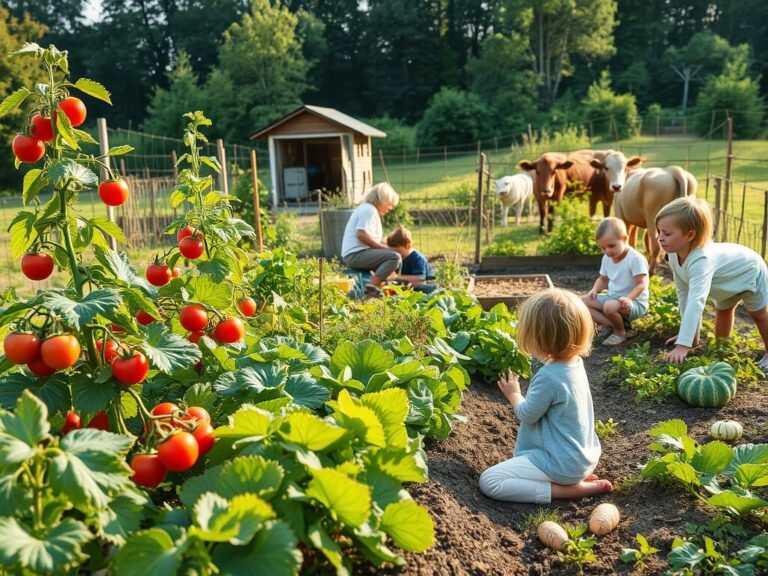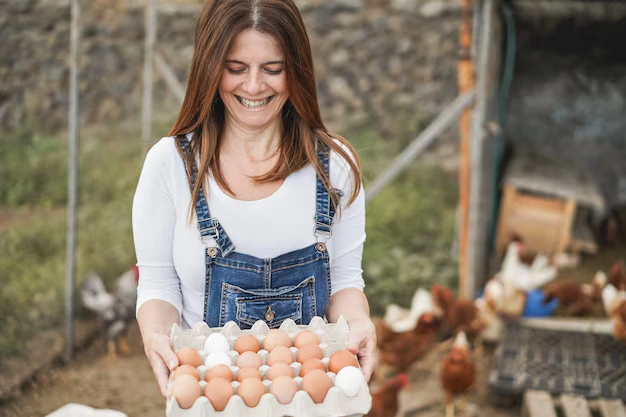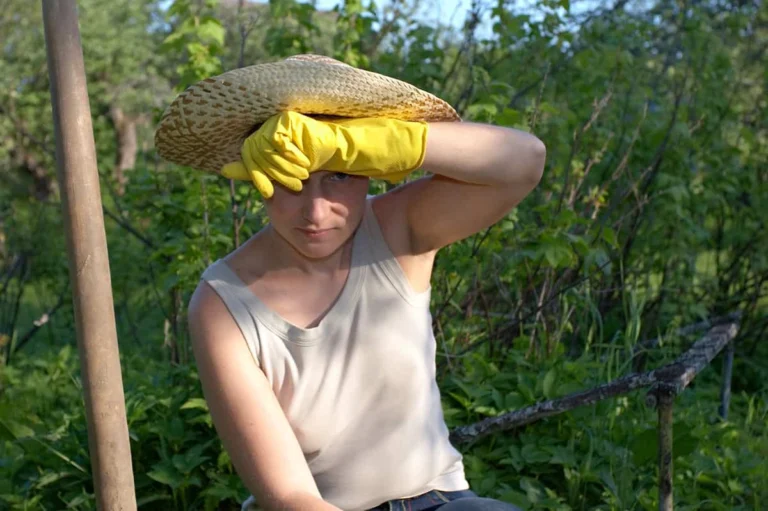Ok but like, can we talk about how the homesteading community is obsessed with this whole “self-sufficiency” narrative? Don’t get me wrong, I’m literally out here living that life, but the way some people act like they need to be completely isolated hermits to be “real” homesteaders is giving main character energy, and not in a good way.
Here’s the tea: community is actually the secret sauce that makes homesteading work, and honestly? We need to stop pretending otherwise. Whether you’re in small-town America or stuck in a big city dreaming about chickens, it’s time to get real about building connections instead of just posting aesthetic barn photos on Instagram.
I’m an introvert, so trust me when I say that reaching out feels like actual torture sometimes. But over the years, I’ve learned that community isn’t just nice to have, it’s literally essential for both your homestead and your sanity. And if you’re sitting there thinking “but I moved to the middle of nowhere to avoid people,” bestie, I have news for you.
PSA: This topic gets me a lot of pushback (shocking, I know), so I actually did a whole podcast about it called “The Inconvenient Truth About Building Community” if you want the extended director’s cut of my thoughts.
What is Cultivating Community and Why is it Important?
When most people hear “cultivating,” they think about soil and plants, not humans. But plot twist: cultivating community literally just means helping your local area grow and thrive. Revolutionary concept, I know.
Here’s what nobody wants to admit: being self-sufficient doesn’t mean you never need anyone ever. Community gives you the chance to bring back that old-school barter system, support local businesses, and actually build something sustainable instead of just cosplaying frontier life for the ‘gram.
I have this story that perfectly explains why community matters, and it’s honestly one of those moments that restored my faith in humanity when everything felt broken.
Our Story…
So we have this friend who heats with wood (because of course we do, we’re all living that authentic life). But he got sick and couldn’t chop firewood anymore. Instead of just letting him freeze or whatever, his coworkers and our entire small town decided to have a firewood day at our place.
Picture this: 9 AM on the coldest Saturday morning imaginable, and suddenly our pasture looks like a very wholesome flash mob. People showed up with chainsaws, tractors, trailers, the whole setup. Kids, adults, basically everyone spent 5-6 hours chopping and stacking wood.
I’m not gonna lie, I got emotional watching this whole thing go down. Like, when was the last time you saw an entire community drop everything to help one family? Especially after the past few years when everyone’s been so disconnected and weird with each other?
That day literally changed how I think about what humans are capable of when we actually show up for each other. It’s giving “what if we tried not being terrible to each other” energy, and honestly, we need more of that.
How to Cultivate Community and Build Connections
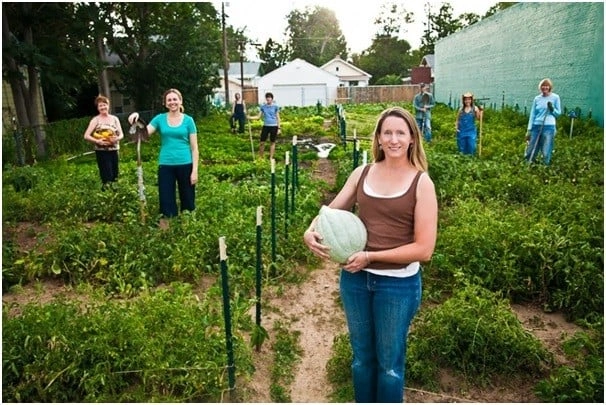
Look, homesteading can be all about community, but nobody really talks about how to actually build that community. Online spaces are great (shoutout to my Project Homestead mentorship group), and they’ve honestly carried me through some lonely times when I felt completely isolated.
But as I’ve gotten older, I’ve realized that local connections hit different. As homesteaders, we need to understand that investing locally isn’t just feel-good fluff, it’s actually strategic. Your homestead can’t provide everything, and creating connections with other farms, producers, and homesteaders is how you fill those gaps.
The problem? Making new connections is actually hard, especially when you’re the new person in a small town that’s been doing things the same way since forever.
I’m definitely not an expert at this, but here’s what’s worked for us:
Step #1: Be Humble
This is going to sound obvious, but the number one way to absolutely tank your reputation in an agricultural community is to show up acting like you know everything. The suspicion is real, and honestly, it’s justified.
You don’t have to be weird and submissive about it, but you do need to respect that people have been doing things their way for literal generations. Even if you have different ideas (and you probably do), approach it with some humility.
Perfect example: ranchers and homesteaders sometimes clash because ranchers are often more conventional while homesteaders are out here researching regenerative agriculture and sustainable practices. Neither approach is wrong, but both sides need to chill and actually listen to each other instead of immediately getting defensive.
Walking into a community and telling someone who’s been farming for 50 years that they’re doing it wrong is not the move. That’s not going to win you friends or influence people, it’s just going to make everyone think you’re insufferable.
Stick to your values, absolutely, but maybe don’t lead with “actually, you’re all doing this wrong” energy.
Step #2: Try to Avoid being Cliquish (aka Get Out of Your Comfort Zone)
Humans are naturally cliquey, it’s just how we work. We gravitate toward what’s familiar and comfortable. The problem is that if you’re constantly waiting for an invitation to join things, you’re probably going to be waiting forever.
Churches, schools, community groups – they all have their established friend groups, and breaking into those circles takes actual effort. If you keep sitting around hoping someone will magically invite you to stuff, you’re going to be disappointed.
We’ve noticed that when we push ourselves out of our comfort zone, the results are actually pretty amazing. It helps people see that we’re here to contribute, not just be “those weird homestead blogger people on the hill.”
The key is showing people that you’re invested in the community’s success. For us, that meant buying a fixer-upper house in town, which was our way of putting our money where our mouth is. You don’t have to buy property, but find something that shows you’re committed to being part of the solution.
Come up with ideas for community improvement. Yes, it might be hard to get people on board at first (people are naturally suspicious of change), but that’s fine. Take the risk and see what happens.
Step #3: Give People Time to Accept You
This one’s important: give people space to warm up to you. Small towns move at their own pace, and that pace is usually slower than whatever you’re used to. Change is hard for established communities, especially when that change comes with opinions and ideas.
I know waiting is frustrating when you’re excited to get involved, but pushing too hard too fast is just going to backfire. Be friendly, be consistent, but let people decide for themselves how they want to engage with you.
Small-town life has its own rhythm, and trying to speed that up is just going to stress everyone out, including you.
Step #4: Avoid Contributing to Community Division
This one’s crucial regardless of where you live, but it’s especially important in small towns where everyone knows everyone’s business. When we started getting to know people in our area, the common theme was division. Not from any specific person or group, just… drama.
In small towns, people have been living close to each other for generations. Families have histories, there are old grudges, and sometimes it feels like you’re walking into a real-life soap opera. I’m talking about friends who haven’t spoken in years, families with multi-generational feuds, the whole thing.
My goal is to not add to that mess, and I challenge you to do the same. When humans are involved, we tend to make things complicated, but you don’t have to participate in that drama.
If someone wrongs you (or you mess up), deal with it quickly and directly instead of letting it fester. The last thing any community needs is more broken relationships and petty conflicts.
How to Build a Homestead Community
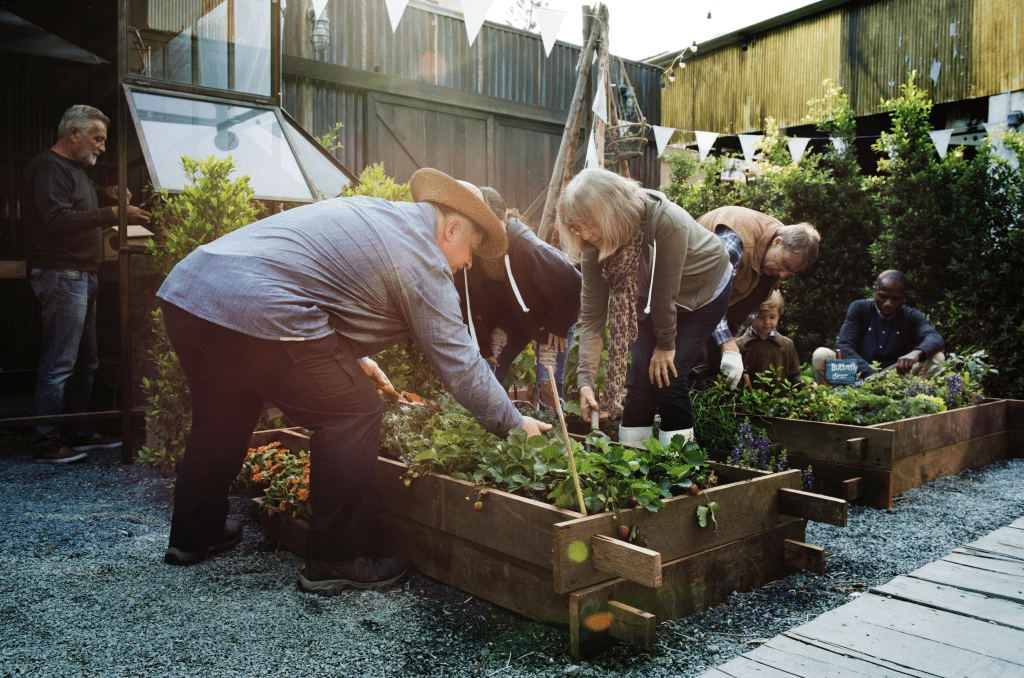
The past few years have really highlighted how important community is. When everything was falling apart and supply chains were breaking down, we ended up leaning hard on our local connections. That experience showed me that community isn’t just nice to have, it’s actually essential.
It also changed how Christian and I think about our homestead. Instead of just focusing on what we need for our family, we’re asking: how can our homestead serve our broader community?
Two big examples: our milking parlor and greenhouse. When we designed them, we kept in mind that someday we might want to provide milk and vegetable starts to our neighbors, not just our family.
Possible Ways to Contribute to Community
Here are some ways your homestead could serve your community:
Products:
- Local milk
- Free-range eggs
- Natural honey
- Maple syrup
- Organic produce
- Firewood
- Vegetable starts
Services:
- Painting
- Wood chopping
- Fence and building repairs
- Animal processing
- Baking
The possibilities are literally endless. It all depends on what your community needs and what you can actually provide. The key is matching your skills with actual demand, not just assuming people want what you’re offering.
Bringing a Homestead Community Together
The best way to actually get to know someone is to work on a project together. It’s way more effective than just talking, and it creates those relaxed connections that turn into real friendships.
I love reading about old farming communities where everyone helped with barn raisings and harvest parties. That collective effort to work toward something bigger than yourself is what real community looks like.
There’s actually a term for this from Brené Brown’s Braving The Wilderness called “Collective Effervescence.” It’s that magic that happens when humans come together to work on a common goal.
That’s exactly what we felt during the firewood day, even though we were freezing our butts off. There’s something powerful about people working together on something that matters.
The potential in small-town America is actually incredible, and you can create that same energy regardless of where you live. Start sharing eggs and vegetables, invite people to help with projects, ask your neighbours how you can get involved.
Build up your local food production, bring back bartering and trading. These are all steps toward creating less dependence on big systems and more connection with the people around you.
Even if you’re in a city with tons of people around you, the same principles apply. You can still build bridges, create connections, and reach out to your community.
The bottom line? Stop waiting for community to happen to you. Be the person who makes it happen, even if it feels awkward at first. Your homestead will be better for it, and honestly, so will you.


